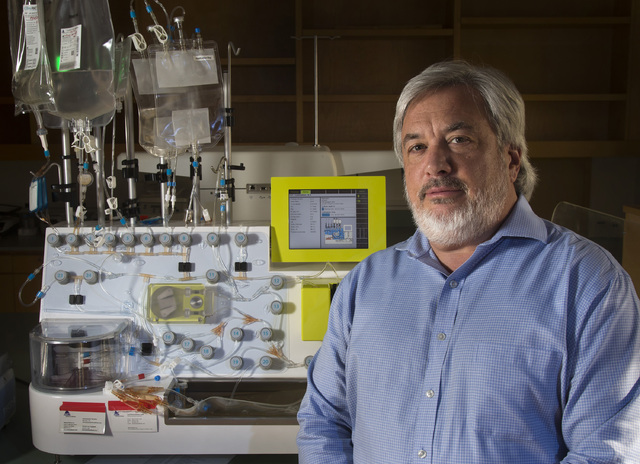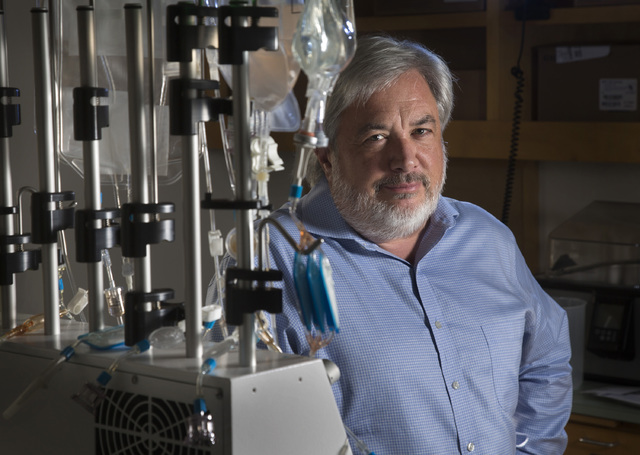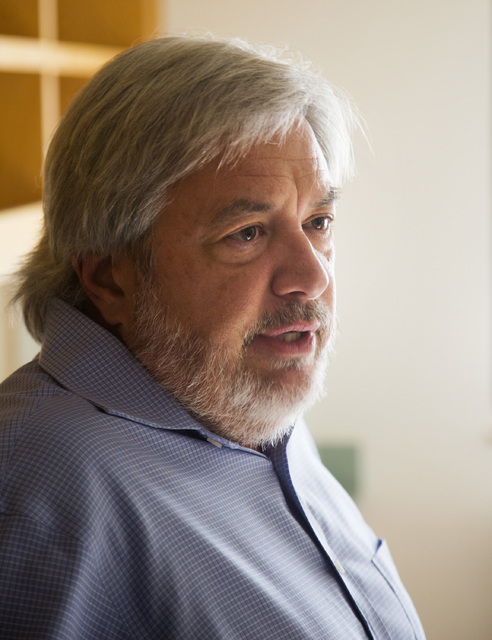Stanford manufactures gene-engineered cells to cure the incurable
PALO ALTO, Calif. — To the list of cool new things made in Silicon Valley, add this: Life, improved.
Inside “clean rooms” of Stanford University’s fledgling Laboratory for Cell and Gene Medicine, lab techs tend machines that churn out gene-engineered cells, which can attack cancer, fix blood disease, patch a heart, alter the immune system, build skin grafts and create a realm of yet-to-be discovered therapies.
The 25,000-square-foot facility, which opened last September, puts Stanford at the forefront of one of medicine’s most important and promising trends: regenerative medicine, which aims to refurbish diseased or damaged tissue using the body’s own healthy cells.
“We’re curing the incurable,” said laboratory director David DiGiusto, who holds a doctorate.
Critics complain that no one makes anything in Silicon Valley anymore except mobile apps and plug-in cars, a decades-long gripe that dates back to the shuttering of chip fabrication plants.
But inside this California Avenue building — constructed with the university’s trademark sandstone-colored stucco, columns, arches and red-tiled roof — is the future of precise, sterile, multistepped and highly automated biological manufacturing.
One of its most successful products is genetically corrected skin, produced in small sheets and grafted onto patients with the blistering skin disease epidermolysis bullosa. People with this excruciating disease have a defective gene that prevents normal production of a protein called type-7 collagen, so their layers of skin do not adhere properly. To fix this, Stanford researchers use a virus to deliver a correct version of the gene onto batches of skin cells, then coax them to form sheets of healthy skin.
For now, the university won’t commercialize these products. Rather, it makes materials that will stay on campus for testing in clinical trials, accelerating the pace of medical research.
In addition to making sheets of healthy skin, the lab’s pipeline of potential therapies include:
—regenerating corneal cells in the eye;
—repairing mutations in a single gene of red blood cells to fight diseases such as sickle cell anemia and beta thalassemia;
—genetically engineering immune system T cells to recognize and attack cancer cells;
—disabling immune cells that reject transplanted bone marrow;
—triggering cardiac cells to replace damaged tissue in the heart.
In the future, the lab may spin out a new company or partner with an existing corporation. It is working to be licensed by the state of California as a biological manufacturer so that someday its products can be shipped across state lines.
“Manufacturing facilities like this are vital to moving this sector forward helping to speed the translation of crucial gene and cell therapies to reach patients with currently unmet medical needs,” said Morrie Ruffin, managing director for the Alliance for Regenerative Medicine, a Washington, D.C.-based nonprofit that advocates for research and commercialization of therapies to regenerate or replace tissues and organs.
While other research labs — such as City of Hope in Los Angeles, University of Pennsylvania, University of Washington and Houston’s MD Anderson Cancer Center — have cell processing facilities, Stanford’s is unique in the breadth of ideas, said DiGiusto.
“There is no place I know of that has a pipeline like this,” said DiGiusto, who also consults nationwide on the construction of such facilities. “Any biotech or pharma company would kill to have our pipeline.”
The lab is in such demand that projects must be wait-listed. Who gets priority? That’s a subject debated around a table by the chairs of medical school departments.
Ideas are selected to combat maladies that affect many people, such as sickle cell disease, or ones that are rare and have no treatment, such as epidermolysis bullosa.
The lab is responsible for the whole sequence of steps needed to move a good idea into a marketable therapeutic.
Before manufacturing, the lab figures out how to repair cells — designing viruses, other vectors or electrical shocks that penetrate the cell membrane and allow substitution of a defective gene with a healthy one.
After manufacturing, the lab helps scientists navigate the regulatory process with the U.S. Food and Drug Administration, providing proof that the techniques used are safe, pure and potent.
The cells are grown in “clean rooms,” like surgical suites. The floors are made of poured epoxy, with no cracks to harbor bacteria. Walls and floors are washed with sterile purified water. A filter catches dust larger than 0.5 microns in size. The filtered air in the rooms is changed 40 to 60 times — “like turning over the whole volume of a room every minute,” DiGiusto said.
Some projects create a vast bank of a single cell type that can help thousands of patients. Others customize; one patient may require a billion cells of a single type.
Cells are nurtured in a broth of sugars, carbohydrates, fats, growth factors and hormones, warmed at body temperature: 98.6 degrees Fahrenheit.
Lab techs can monitor the health of the engineered cells by peering into the screen of a microscope camera. “We can tell when they’re happy and growing, or they’re not,” DiGiusto said.
Creating life-saving cells isn’t cheap. The cost? About $26,000 to $30,000 per patient. “But the worth is priceless,” he said. “How much is it worth saving your loved one’s life?”
Stanford University and the hospitals fund the research, which provides an intangible payoff.
“We built this to attract the best scientists in the world to come here and do this work,” he said. “There’s value in the pre-eminence we create.”





